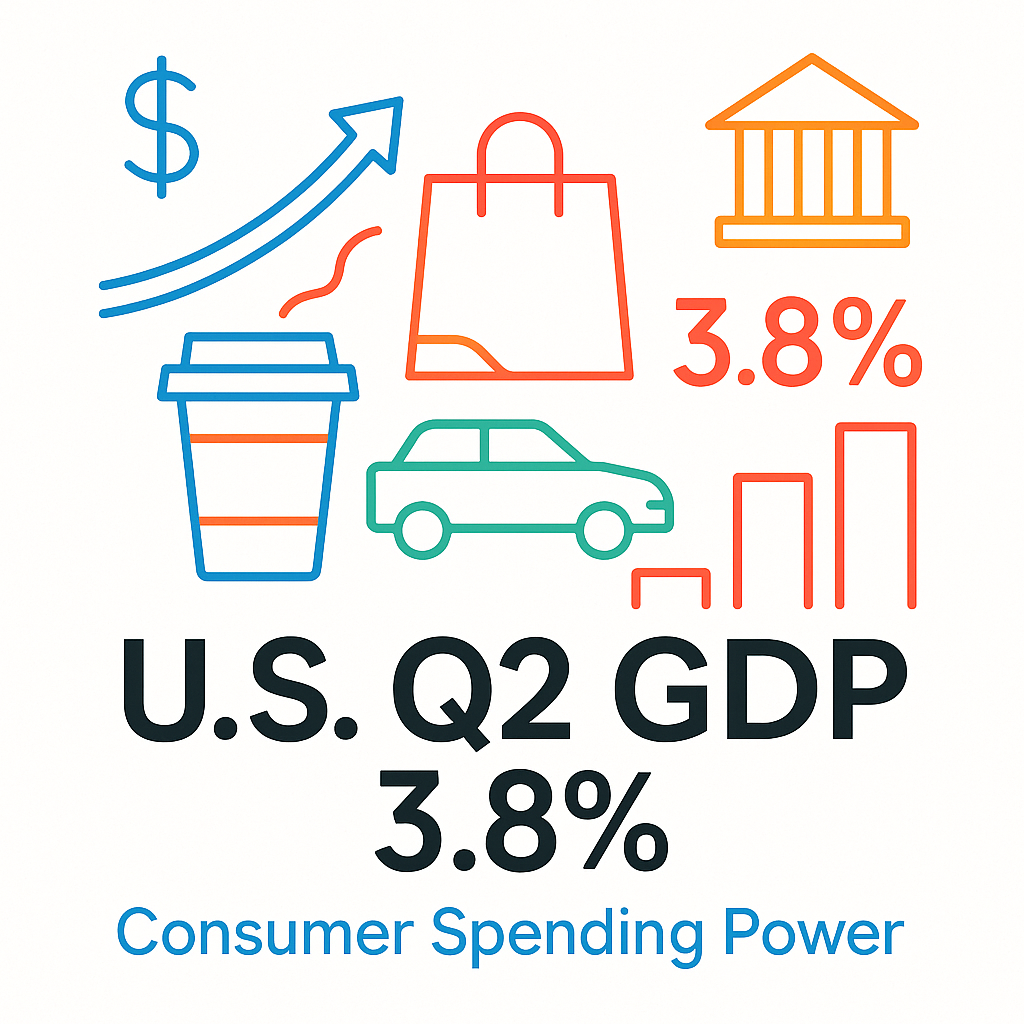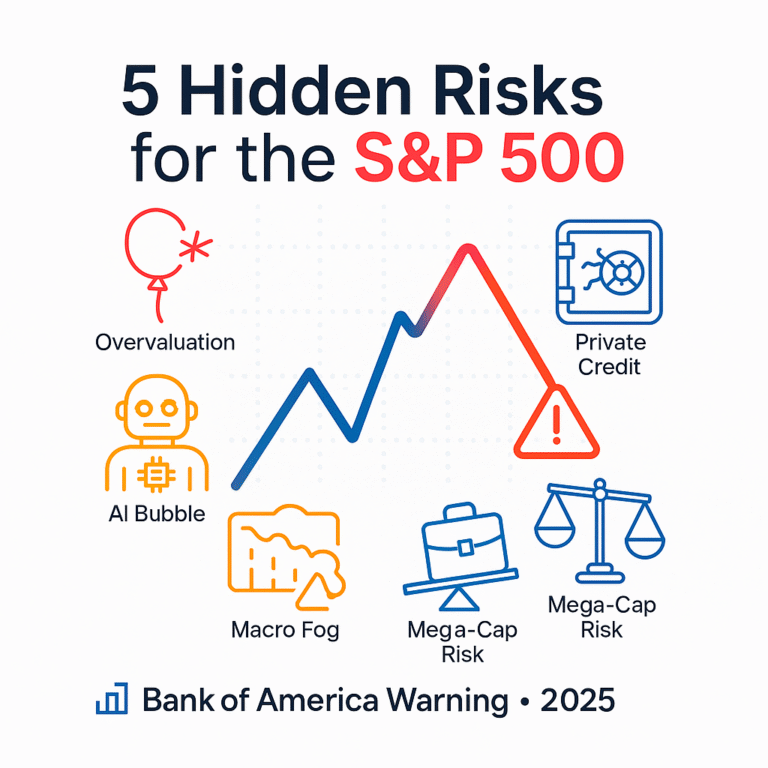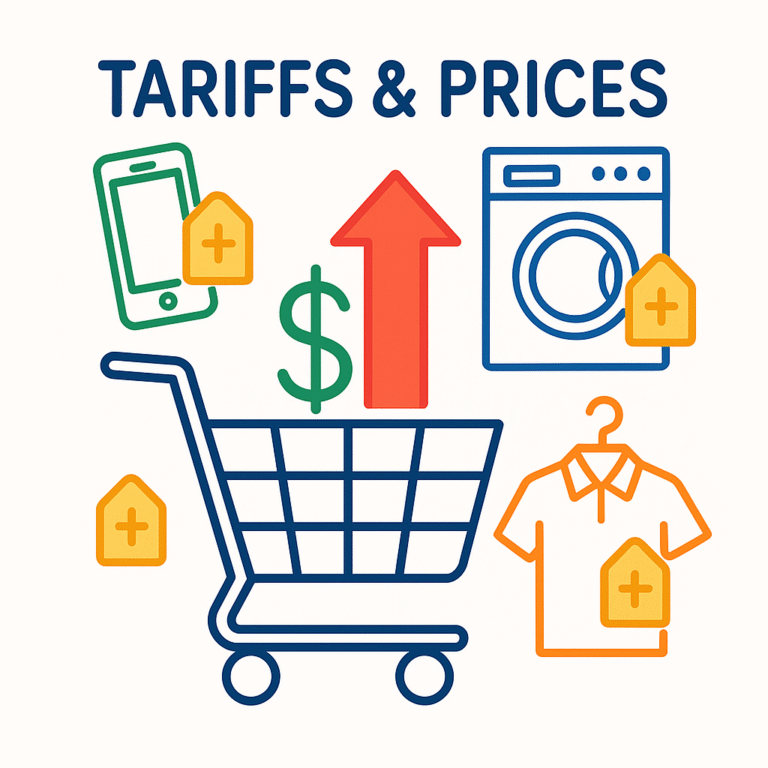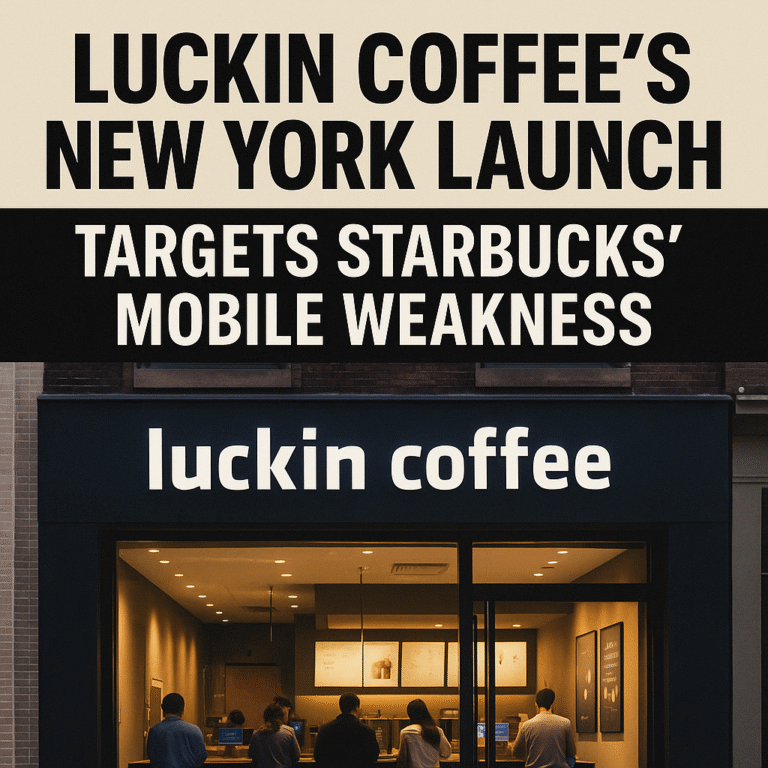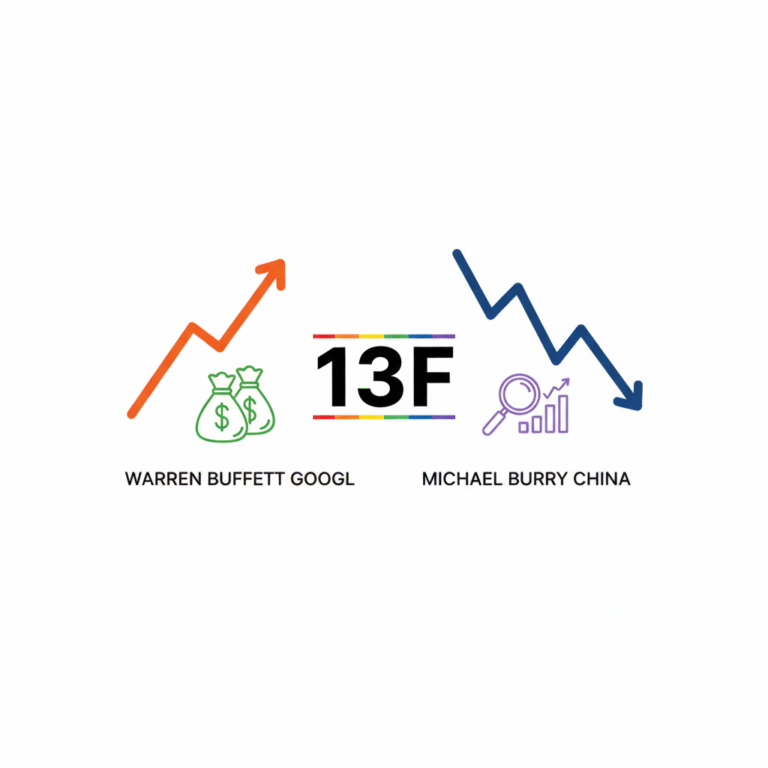U.S. Q2 2025 GDP Revision Explained: Why Consumer Spending Drove Growth to 3.8%
The U.S. economy grew at 3.8% in Q2 2025 after a major revision. Strong consumer spending drove the rebound. Here’s what the revision means for markets and policy.
Key Takeaways
✔ U.S. Q2 2025 GDP revision explained: growth revised up to 3.8% annualized
✔ Consumer spending drove U.S. GDP growth 3.8%, offsetting weak investment
✔ Final sales to private domestic purchasers rose 2.9%, showing resilient demand
✔ Business investment stayed weak, while trade uncertainty lingers
✔ Why America’s Q2 GDP was revised upward 2025 — Fed may slow rate cuts
The U.S. economy surprised markets in Q2 2025. After contracting by –0.6% in the first quarter, growth rebounded. The Commerce Department’s third estimate shows GDP rising at an annualized 3.8%, up from the earlier 3.3%.
This U.S. Q2 2025 GDP revision explained one clear trend: consumer spending drove the rebound. Strong household demand, paired with lower imports, lifted growth above expectations. The question now is whether this momentum is sustainable through the rest of 2025.
From Contraction to Recovery in Q2 2025
In Q1 2025, GDP fell –0.6% due to rising imports and weak private investment. Concerns about a slowdown spread quickly. But by Q2, the picture changed. Stronger consumer spending and falling imports were the main reasons why America’s Q2 GDP was revised upward 2025, bringing the growth rate to 3.8%.
Breaking Down the Numbers
Component Contributions
|
Component |
Revised Estimate |
Contribution |
|---|---|---|
|
Consumer Spending |
+2.5% (was 1.6%) |
Consumer spending drove U.S. GDP growth 3.8% |
|
Imports |
Larger decline |
Helped growth via trade balance |
|
Private Investment |
Weak |
Dragged on growth |
|
Final Sales to Private Domestic Purchasers |
+2.9% (was 1.9%) |
Showed resilient core demand |
Consumer spending growth in services such as transportation, finance, and insurance was the key driver. Private investment, however, remained soft, raising questions about longer-term momentum. Final sales to private domestic purchasers rose 2.9%, underscoring steady demand even without inventory effects.
Market Reaction
The U.S. Q2 2025 GDP revision explained why Treasury yields climbed and the dollar strengthened. Markets viewed the stronger growth as reducing the Fed’s room for aggressive rate cuts.
Expert Views on the 3.8% GDP Growth
Ryan Sweet of Oxford Economics commented that “the Q2 2025 GDP revision could slow the Fed’s pace of easing.” Christopher Rupkey added that “current rates are not holding back growth or the labor market.” Meanwhile, the White House framed the revision as proof of successful policy, showing how the economic narrative has political weight.
Consumer-Driven Growth and Underlying Risks
Investor Implications
Consumer spending drove U.S. GDP growth 3.8%, which supports retail and services sectors. Yet weak business investment and trade risks remain vulnerabilities. Investors should watch how rate cut expectations adjust in response.
Policy Impacts
The Fed is likely to wait for more data before cutting rates further. Stronger growth makes rapid easing less urgent. Fiscal policy could also face tighter constraints as deficits remain elevated.
Household and Business Effects
Households are benefiting from rising incomes and stable credit conditions, which explain why America’s Q2 GDP was revised upward 2025. Businesses, while enjoying stronger demand, still face pressure from input costs and global trade frictions.
What to Watch in the Second Half of 2025
Key indicators will determine whether growth stays near 3.8%:
- Jobs report: September’s nonfarm payrolls and unemployment rate will shape Fed decisions
- Core PCE inflation: Will show whether inflation risks are under control
- Trade flows: Sustained import declines could keep boosting GDP
- Investment recovery: Stronger capital spending is needed for durable growth
The U.S. Q2 2025 GDP revision explained that consumer spending was the clear growth engine, pushing the economy to 3.8%. Still, weak investment and trade uncertainty mean risks remain.
References
- BEA: GDP 2nd Quarter 2025, Third Estimate – bea.gov
- Reuters: U.S. Q2 GDP revised to 3.8% – reuters.com
- FT: US second-quarter GDP growth rate revised up – ft.com
- AP News: U.S. economy expanded at 3.8% pace – apnews.com
- White House: Strong Spending Drives Growth – whitehouse.gov

